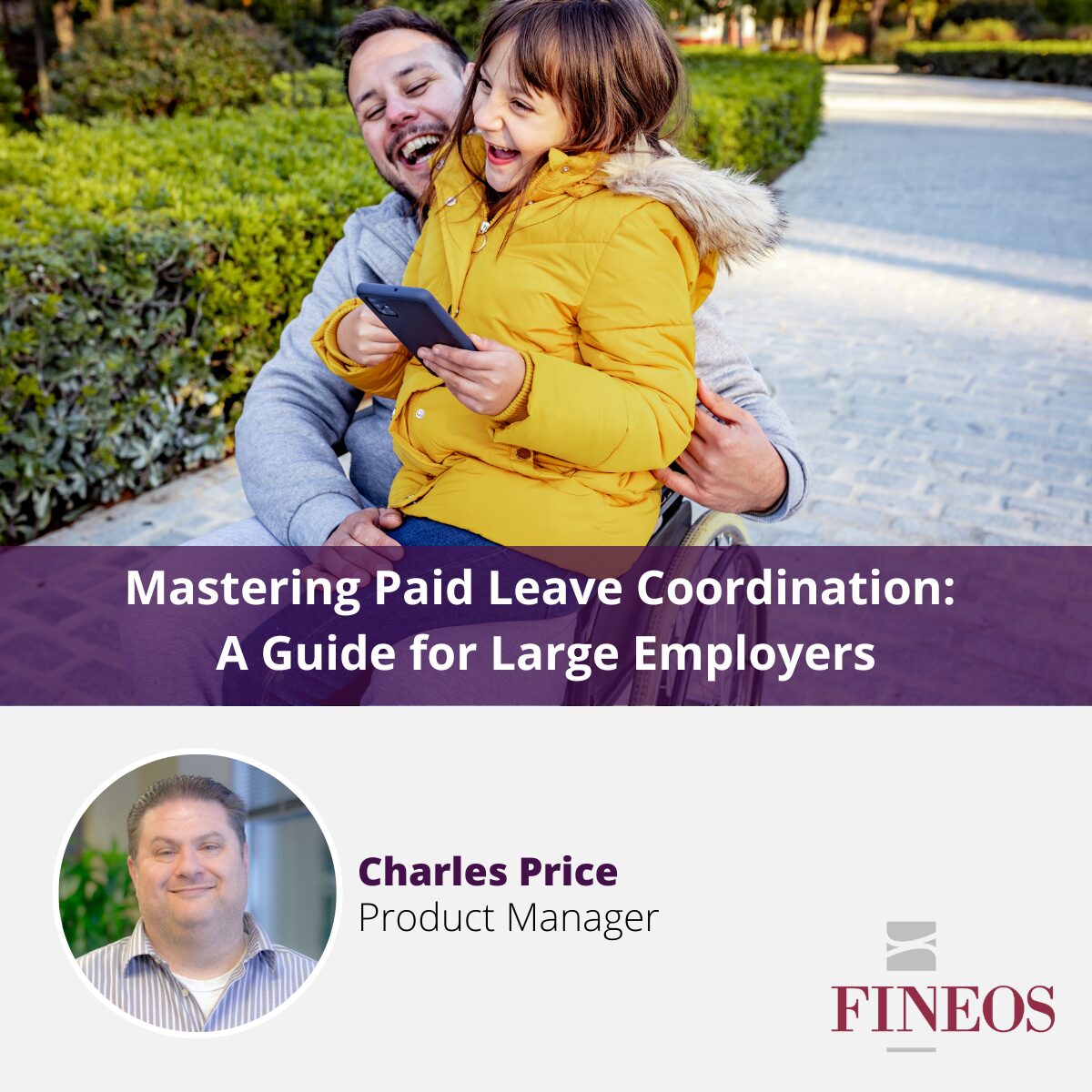For employee benefits carriers, creating a great experience for customers is key to their success. But without modern integrated disability and absence management solutions, the process of taking paid leave can quickly become stressful for employees. In this blog, FINEOS Chief Marketing Officer, Chuck Johnston, shares a personal experience with absence management gone wrong.
In my professional life, I talk a lot about the need to be purpose-built for the Employee Benefits market in order to serve insurers, employers and employees well. I have well-reasoned arguments with diagrams and charts but sometimes a story really brings these points home.
I’ve been working as an executive sponsor and supporter with the FINEOS Integrated Disability and Absence Management (IDAM) program since its inception. I’ve learned a lot about the subject and have the pleasure of working with some of the most knowledgeable experts in the industry.
So, when my son called me with some parental leave questions, I thought I could certainly give him some advice. Matt and Jillian live in a state with paid family leave and both work for companies with very accommodating leave policies. Their daughter Claire (my first grandchild!) was born in February and Matt called me in January to discuss FMLA, PFL, etc.
I am the “insurance guy” in the family so like many of you, I get these calls fairly often. That call turned into a series of calls and emails over the following months as he took me through his absence odyssey.
First, it became obvious the HR department didn’t know how or when to best activate FMLA for his situation. He found himself hoping baby Claire would arrive when “scheduled” to avoid more issues. Fortunately, she delivered. (Bad pun, I know, but there isn’t a lot of IDAM humor in the world). When that was sorted, he noticed that his paid family leave benefit payments were inaccurate, which added to the usual stress of new fatherhood.
I gave him the best advice I could, and then spoke to my work colleagues. They are literally the industry experts on ERISA/Absence law and the implementation of the paid family leave law under which my son’s benefits were paid.
My colleagues provided great advice around how to craft a response to the state to clear up the calculations and I relayed that advice back to Matt. At the end of the process, retro payments were made, and all appropriate rules were followed. Matt, Jillian, and Claire live happily ever after.
The Holmes and Rahe stress scale measures various life stresses and the general impact they have on personal health. If you add up the various stresses associated with having a new child, plus the financial and work-related issues that go with that for working parents, it’s actually higher than the stress caused by the death of a spouse. It also creates a lot of distraction, which makes it difficult to maintain a back-and-forth with a government agency following the birth of a child.
Watching my own family go through this experience of utilizing paid family leave benefits reminded me why it is important for absence management systems to be purpose-built. Vendors have to look at the entire user experience when building software for insurance companies serving the Employee Benefits market.
The employee benefits market is a complex and messy business with everchanging regulations, a myriad of calculations and highly distracted consumers that almost never understand the rules. And most of them don’t have a dad who’s an insurance nerd.


